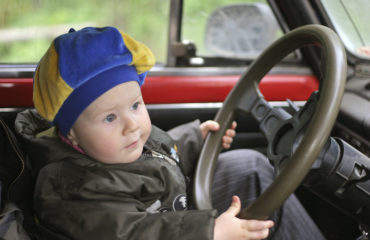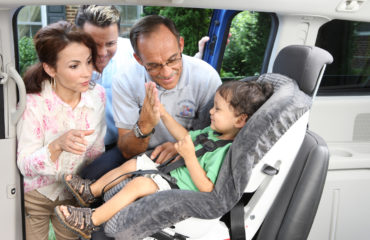September 14-20, 2014 is Child Passenger Safety Week
In the U.S., car crashes are one of the top causes of death for all children ages 1 to 13. Globally, it a leading cause of death for children above the age of five. Child safety seats are one of the most effective methods of protecting your child in a motor vehicle. This article will provide three tips on what you can do to keep your child safer in the car.
Did you know:
- During the 5-year period from 2008 to 2012, more than 3,390 children were killed in car crashes. In addition, an estimated 613,000 children were injured.
- In 2012 alone, 121,000 children under age 13 were injured as passengers in car crashes.
- In 2012, over one third (37%) of children killed in car crashes were not in car seats, booster seats, or seat belts.
- Every 34 seconds one child, under age 13, is involved in a crash.
All 50 States, the District of Columbia, and all U.S. territories have laws requiring children to be restrained while riding in cars. Some States now require kids to ride in appropriate car seats or booster seats until age 9.
Properly installed car seats can reduce the risk of fatal injury by 71 percent for infants and by 54 percent for toddlers in cars. To get the most protection for your child from a child safety seat, you should take the following three actions:
- Purchase the proper child safety seat for your child.
- Have a certified technician inspect your installation.
- Register your child’s car seat with the manufacturer.
Purchase the Right Child Car Seat
It is important to understand that if your child is under age 1, she or he should always ride in a rear-facing car seat in the back seat. It provides critical support to a child’s fragile neck and spinal cord in the event of a crash. As your child grows up, the seat must also change.
For children ages 1-3, they should remain rear-facing as long as possible, and then once they outgrow the rear-facing seat, it is time to use a forward-facing car seat. It limits a child’s forward movement in a crash because of a harness and attached tether. For children ages 4-7, keep them in a forward-facing seat until they reach the height or weight limit, and they then can advance to a booster seat.
A booster seat makes sure a seat belt is properly positioned over a child’s body. A standard seat belt is designed for an adult, not a child. Thus a child should not be using a seat belt until she or he is at the right height. If the child can sit with his or her back against the car seat and have her or his knees bend comfortably, then he or she is at the right height. If the knees don’t bend over the seat easily, then the child will slouch, which defeats the whole purpose of a seat belt. Typically, a child should be 57 inches tall.
After the booster seat, a child should still remain in the back seat and buckled up where it is safer. For more information on the proper child car safety seat, go to: www.safercar.gov
Have Your Car Seat Inspected
What is concerning is a vast majority of child car seats are not properly installed. Part of the reason is a failure to read and carefully follow the installation instructions included with a car seat as well as those in the vehicle owner’s manual. However at times, even with the best of intentions, parents may not properly install a car seat. Incorrect installation exposes a child passenger to grave risk of serious injury or death in a crash.
September 14-20, 2014 is Child Passenger Safety Week. During this week many communities will have Certified Child Passenger Safety Technicians on-hand to provide free education on how to use car seats, booster seats, and seat belts for children.
The technicians will also help educate you about choosing the right car seat for your child, the importance of registering your car seat with the manufacturer, and what to expect should your seat be subject to a safety recall.
The week concludes with National Seat Check Saturday on September 20, when certified Child Passenger Safety Technicians will be available at car seat events across the country to offer advice and instruction on proper installation.
Want to learn where the closest car seat event will be? Go to www.SafeKids.org where upcoming events are listed by coalitions and states. With September 20th as National Seat Check Saturday there will almost certainly be a number of events in your area. If not, you can still contact a technician directly and get assistance.
Register Your Child’s Car Seat
Finally, be sure to register your child car seat with the manufacturer. If there is a safety recall, the manufacturer is required to notify all registered owners by first class mail that their child restraint is included in the recall. Therefore, it is important that the manufacturer of your child safety seat has your current mailing address, and all of the information necessary to identify your child restraint.








